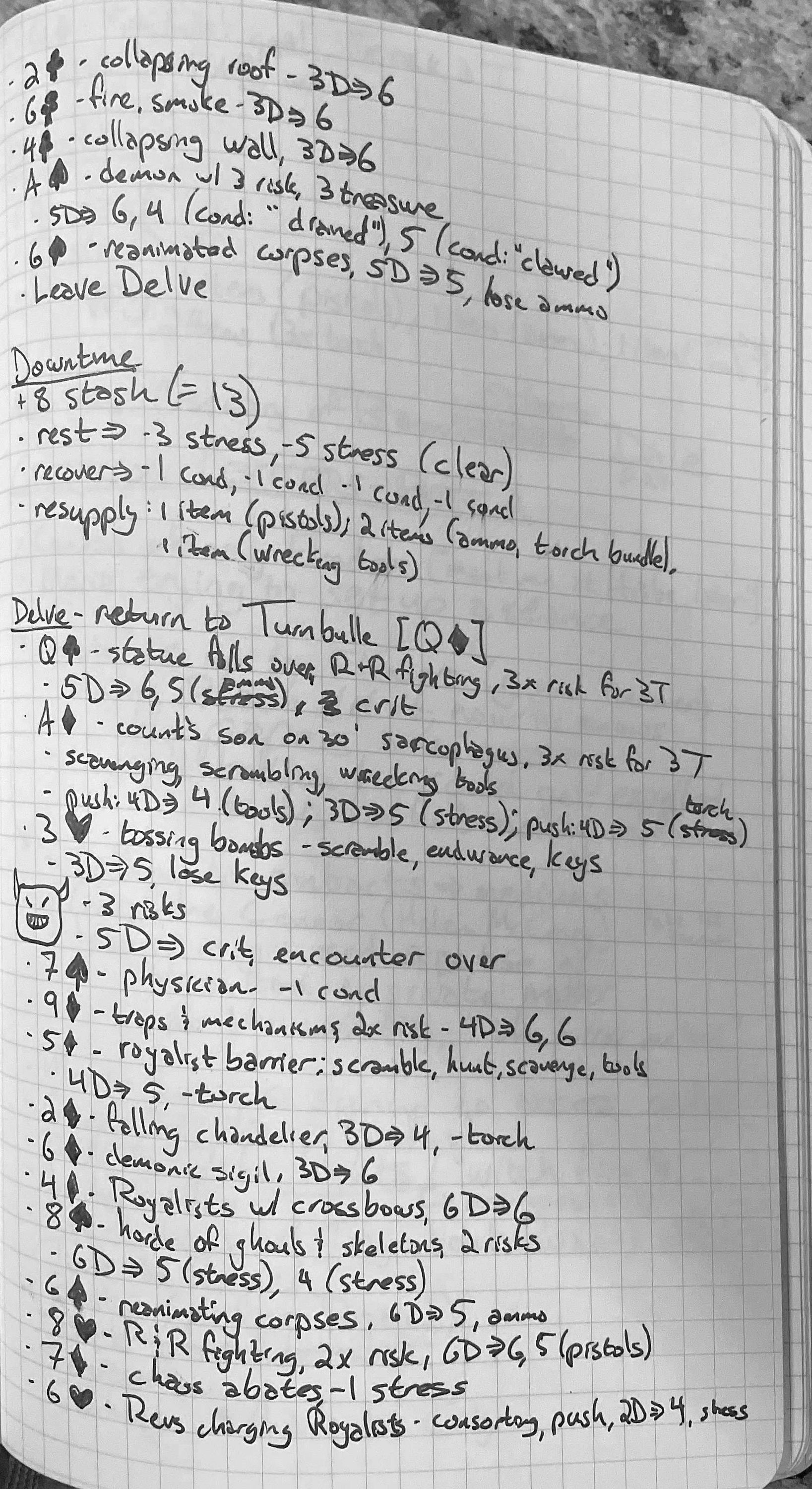A Torch in the Dark - Review
Normally, I use this site to post session logs, not reviews. However, I will make an exception for this game as the session logs would be extremely long and repetitive. I’ll explain further down.
A Torch in the Dark is a “Forged in the Dark” game designed for solo dungeon exploration. It features an open-ended skill system, inventory management, and nine dungeons to explore.
Mechanically, it works like this: when we venture into a dungeon, you draw cards to see what random challenge you’ll face. For every skill or item that could apply, roll +1d. Look at the highest: on a 6 you succeed; on a 4-5, you succeed with a minor cost; and on a 1-3, you fail with significant cost. Each challenge requires 1-3 of these risk rolls. Most of the time, you press on whether or not you succeeded, but sometimes you need successes to gain some other benefit, like treasure or a companion for the rest of that particular delve. After a delve, you return to safety and go through a downtime procedure to resupply and reduce the three “harm” tracks (Conditions, Corruption, and Stress).
The (admittedly basic) skill system and core approach to resolving challenges both work pretty well. As you might expect, the majority of challenges involve fighting undead, demons, and cultists, but there are some exploratory challenges (locked doors, yawning chasms, etc.) as well. This is where I start to have my first problem with the game: the dungeon content is quite linear (explore each of these nine dungeons in order) and repetitive.

Given the volume of the content (the average dungeon will take 27 challenges to reach the end, assuming you never need to leave and resupply), and that so many of the challenges feel like the same thing, the replay value is pretty low. We’re not generating any real narrative, though perhaps replaying as (say) some sort of arcanist rather than a general tomb robbing fighter/thief might potentially play out slightly differently in my head. I played through the whole game in under 10 hours, maybe closer to 5, so allocate an hour or less for each dungeon.
Downtime is flawed mechanically as well. You spend one stash (treasure) per roll, and you can either roll several dice together and take the highest or just roll several different times. The former is always the inferior approach: if you have a choice “take the highest of 2 and 5 and get the corresponding benefit” versus “take the benefits of each”, then clearly you just get less benefit from taking the highest. In the late game, you have so much treasure available that downtime costs don’t really matter anyway, as you’ll usually have a surplus.
The system also could use some clarification on high-stakes challenges that require multiple successes to get treasures. I chose to approach it such that my character could attempt more than the minimum risk rolls, so if I needed 3 successes to win and it took 5 rolls to get those successes, that’s okay (because I’m paying the costs for the 2 failures plus the costs for any mixed successes).
A system derived from this but using some other random dungeon generator could be a lot of fun. The layout is simple but works well. Sufficient references are included to make finding rules or lists pretty quick, although I’d have appreciated an index and bookmarks.

